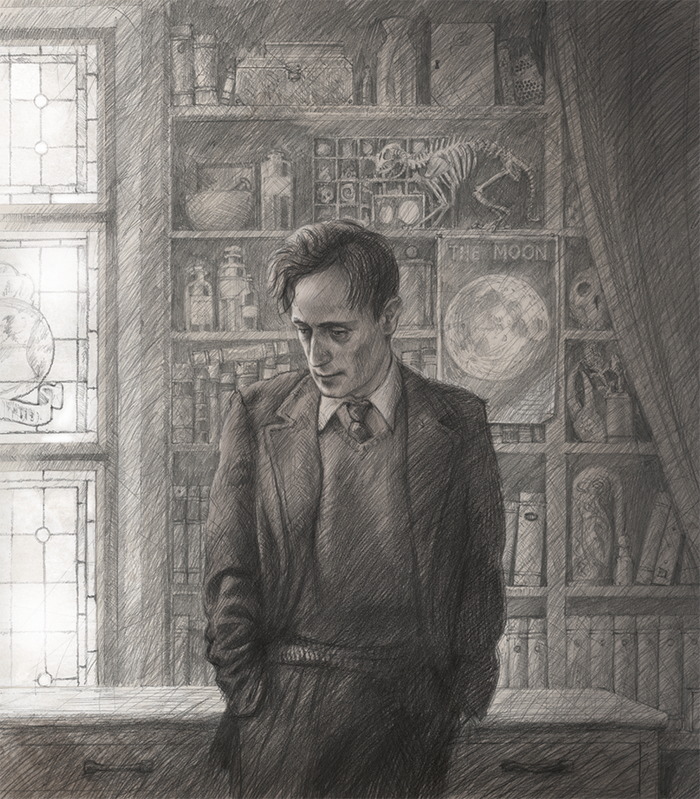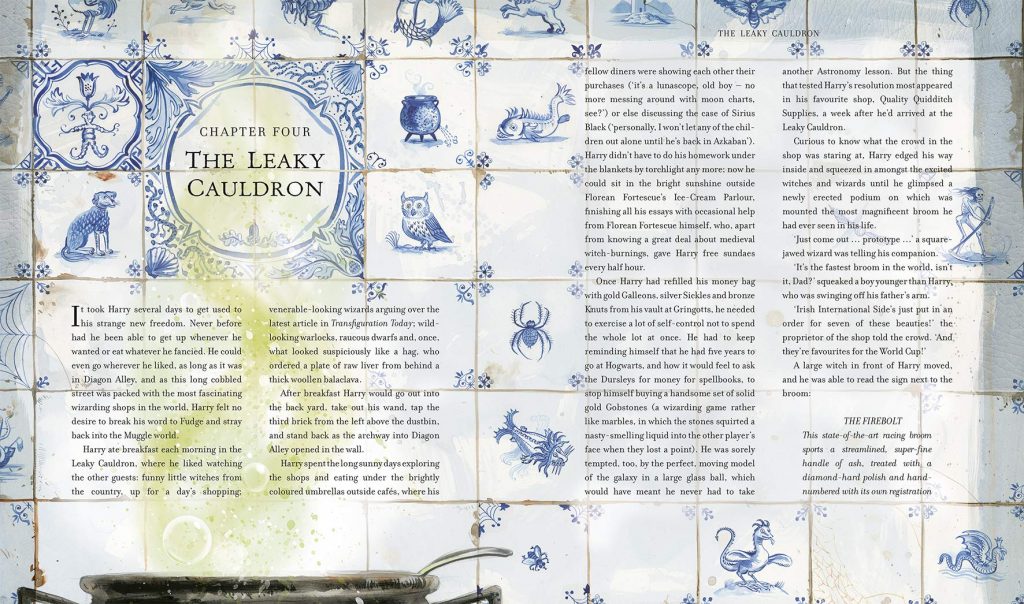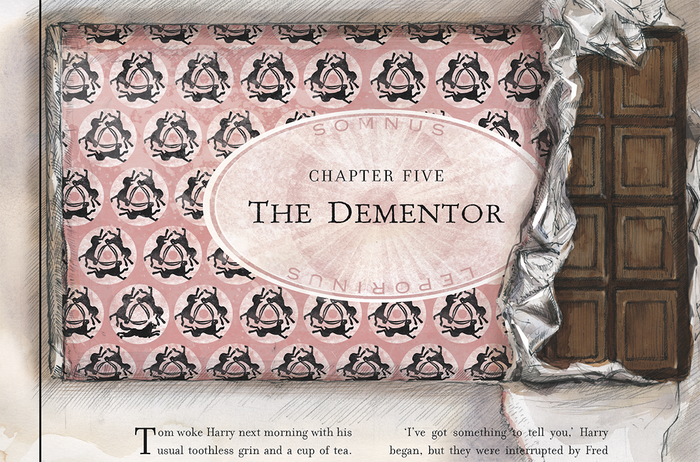Motifs in Jim Kay’s Illustrations for “Harry Potter and the Prisoner of Azkaban”
Just as the words on the pages of each Harry Potter book enchant millions around the world, so too does illustrator Jim Kay’s art. Having pored over the details for my Easter eggs articles, I have become incredibly fond of the illustrated editions, welcoming the latest publication, Harry Potter and the Goblet of Fire, to a place of honor in my collection. Kay plants clever references, foreshadowing, and motifs in each book, and I delight in deciphering them.
In September, I shared my analysis of several motifs dotting the illustrated edition of Harry Potter and the Chamber of Secrets; last month, I published my second Easter egg hunt, this time diving into Harry Potter and the Prisoner of Azkaban. I was shocked and humbled to hear that Kay recently gave my analyses a shout-out at an event promoting his illustrated version of Goblet of Fire. I am happy to draw the attention of MuggleNet readers to the extraordinary level of care Kay takes in helping us visualize these well-loved characters, settings, and moments.
A visual motif is an image that shows up frequently in an artist’s work. These may be intentional or happenstance, but nevertheless, these repeated images contribute to the character of Kay’s illustrated editions. The shapes and symbols draw the mind of the reader toward certain ideas and moods, adding extra magic to each illustrated scene.
Here’s my take on the motifs lacing Kay’s stunning illustrations for Prisoner of Azkaban. Some have been called out by Kay himself while others stuck out to me as I flipped through my copy.

The moon plays a significant role in this book, serving as an antagonist and setting off the climax. The image of the moon remains ever-present and watchful throughout the story, foreshadowing the reveal of Lupin’s true nature:
- Page 92, carved into the wardrobe
- Page 124, a crescent moon
- Page 242, above the greenhouse
- Page 283, a full moon
- Page 307, behind the branches
- Page 318, behind Lupin
- Page 322, in a crest above the door
After finding over 80 spiders in Chamber of Secrets, there was a drastic decrease in their number in this book. I wonder if many are still in the Forbidden Forest. Those that remain are few, sometimes accompanied by their webs:
- Pages 38–39, in the Leaky Cauldron’s tiles
- Pages 42–43, again in the tiles
- Pages 44–45, near Harry’s shoulder
I am still very curious about the cephalopods that often crop up. Either they represent some mysterious wisdom, or Kay just likes drawing them:
- Page 10, tentacles on the book cover
- Page 38, in the Leaky Cauldron’s tiles
- Pages 42–43, again in the tiles
- Pages 44–45, escaping the tank

In the same vein, I noticed several sea shells, coral, fish, and other sea life in this book, reminding the reader of the rocky shores of Azkaban. Such images are found on these pages:
- Pages 38–39, in the Leaky Cauldron’s tiles
- Pages 44–45, in various tanks
- Page 146, atop the one-eyed crone’s staff
Acorns and oak leaves continue their presence. Rowling wrote that “wands of English oak demand partners of strength, courage and fidelity,” all of which are values upheld by James’s friends Sirius and Remus but lacked by Peter, as revealed in this book. These symbols abound:
- Page 38, in the Leaky Cauldron’s tiles
- Pages 66–67, in the gate
- Page 92, carved into the wardrobe
- Page 243, at the greenhouse’s entrance
- Page 257, in the framed picture
- Page 283, in the trees
- Pages 322–323, in the wall
Readers might find themselves fearing for their lives with all the Grims appearing in this book. Kay’s dogs (and other members of the Canidae family) most obviously represent Sirius but also symbolize his character traits of loyalty, faithfulness, guidance, and protection:
- Pages 12, 16, and 17, Aunt Marge’s dog Ripper and the badges
- Page 26, the Grim
- Page 38, in the Leaky Cauldron’s tiles
- Page 137, at the Quidditch game
- Page 124, a fox
- Page 192, Leroy atop the heraldry
- Pages 226–231, Sirius
- Page 256, a jackal above the door
- Page 283, a howling wolf
- The back cover, Sirius in the shadows
Finally, the most prevalent pattern in Prisoner of Azkaban is the abundance of hares. Kay says that he is “fascinated by hares,” which he often pairs with the moon; the chocolate wrapper on page 53 displays “the symbol of the three conjoined hares that crops up in architecture from China… to the British Isles.” The writing of Somnus Leporinus, or “sleep with eyes open,” signifies a “connection between the hare and the moon.” It’s a fitting choice for Lupin.

Hares also appear on the following pages:
- Page 38, in the Leaky Cauldron’s tiles
- Pages 54–57, in the background
- Page 124, below a crescent moon
- Page 257, in the framed picture
- Pages 257–261, in the Shrieking Shack’s wallpaper
- Page 283, below a full moon
- Page 322, in a crest above the door
These are only some of the motifs that can be found in Prisoner of Azkaban. Let us know in the comments if you’ve noticed any recurring symbols, and look out for my breakdown of Easter eggs in Goblet of Fire coming soon.

